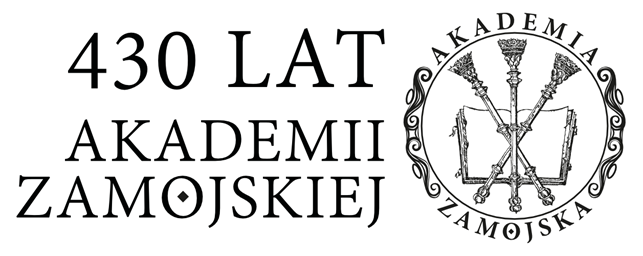Agnew, J. 2008. “Borders on the Mind: Re-Framing Border Thinking.” Ethics & Global Politics 1 (4): 175–191. doi: 10.3402/egp.v1i4.1892.
DOI: https://doi.org/10.3402/egp.v1i4.1892
Anderson, J., and L. O’Dowd. 1999. “Borders, Border Regions and Territoriality: Contradictory Meanings, Changing Significance.” Regional Studies 33 (7): 593–604.
DOI: https://doi.org/10.1080/00343409950078648
Bański, J. 2010. “Granica w badaniach geograficznych — definicja i próby klasyfikacji.” Przegląd Geograficzny 82 (4): 489–508.
DOI: https://doi.org/10.7163/PrzG.2010.4.1
Bergs, R. 2012. “Cross-Border Cooperation, Regional Disparities and Integration of Markets in the EU.” Journal of Borderlands Studies 27 (3): 345–363.
DOI: https://doi.org/10.1080/08865655.2012.751710
Clement, N.C. 1997. “The Changing Economics of International Borders and Border Regions.” In Borders and Border Regions in Europe and North America, edited by P. Ganster, A. Sweedler, J. Scott and W.D. Eberwein, 47–63. San Diego, Calif.: San Diego State University Press, Institute for Regional Studies of the Californias.
Dolzblasz, S. 2015. “Symmetry or Asymmetry? Cross-Border Openness of Service Providers in Polish-Czech and Polish-German Border Towns.” Moravian Geographical Reports 23 (1): 2–12. doi: 10.1515/mgr-2015-0001.
DOI: https://doi.org/10.1515/mgr-2015-0001
Ganster, P., A. Sweedler, J. Scott, and W.D. Eberwein. 1997. “Dynamics of Transboundary Interaction in Comparative Perspective.” In Borders and Border Regions in Europe and North America, edited by P. Ganster, A. Sweedler, J. Scott and W.D. Eberwein, 3–23. San Diego, Calif.: San Diego State University Press, Institute for Regional Studies of the Californias.
Gorzelak, G. 2003. “Bieda i zamożność regionów.” In Wymiar i współczesne interpretacje regionu, edited by I. Sagan and M. Czepczyński. Gdańsk-Poznań: Uniwersytet Gdański, Bogucki Wydawnictwo Naukowe.
Holly, W., J. Nekvapil, I. Scherm, and P. Tiserova. 2003. “Unequal Neighbours: Coping with Asymmetries.” Journal of Ethnic and Migration Studies 29 (5): 819–834. doi: 10.1080/1369183032000149587.
DOI: https://doi.org/10.1080/1369183032000149587
Jakubowski, A., and U. Bronisz. 2015. “Granica Unii Europejskiej jako czynnik (dez)aktywizujący rozwój i konkurencyjność obszarów przygranicznych.” In Wybrane aspekty rozwoju i konkurencyjności nowych krajów członkowskich Unii Europejskiej, edited by A. Grynia, 627–639. Wilno: Uniwersytet w Białymstoku. Wydział Ekonomiczno-Informatyczny w Wilnie.
Jakubowski, A., U. Bronisz, and A. Miszczuk. 2017. “Polityka spójności oraz Europejski Instrument Sąsiedztwa i Partnerstwa jako narzędzia wsparcia współpracy transgranicznej na wewnętrznych i zewnętrznych granicach Unii Europejskiej.” Roczniki Nauk Społecznych 9 (3): 73–89.
DOI: https://doi.org/10.18290/rns.2017.45.3-5
Kawałko, B. 2007. “Granica wschodnia jako czynnik ożywienia i rozwoju społeczno-ekonomicznego regionów przygranicznych.” In Ekspertyzy do Strategii Rozwoju Społeczno-Gospodarczego Polski Wschodniej do roku 2020. Tom 2, 7–41. Warszawa: Ministerstwo Rozwoju Regionalnego.
Kawałko, B. 2011. “Wybrane problemy polsko-ukraińskiej współpracy transgranicznej.” Barometr Regionalny. Analizy i prognozy 2 (24): 35–60.
Knippschild, R. 2011. “Cross-Border Spatial Planning: Understanding, Designing and Managing Cooperation Processes in the German-Polish-Czech Borderland.” European Planning Studies 19 (4): 629–645. doi: 10.1080/09654313.2011.548464.
DOI: https://doi.org/10.1080/09654313.2011.548464
Kratke, S. 1999. “Regional Integration or Fragmentation? The German-Polish Border Region in a New Europe.” Regional Studies 33 (7): 631–641. doi: 10.1080/00343409950078675.
DOI: https://doi.org/10.1080/00343409950078675
Laine, J. 2012. “Border Paradox: Striking a Balance between Access and Control in Asymmetrical Border Settings.” Eurasia Border Review 3 (1): 51–79.
Lawn, P. 2007. “What Value is Gross Domestic Product as a Macroeconomic Indicator of National Income, Well-Being, And Environmental Stress?” International Journal of Ecological Economics and Statistics 8 (S07): 22–43.
Miszczuk, A. 2012. “Dysproporcje społeczno-ekonomiczne jako uwarunkowanie współpracy transgranicznej (na przykładzie pogranicza polsko-ukraińskiego).” In Kadry dla gospodarki transgranicznej, edited by M. Kowerski and I. Pieczykolan, 37–50. Zamość: Wyższa Szkoła Zarządzania i Administracji w Zamościu.
Miszczuk, A. 2013. Uwarunkowania peryferyjności regionu przygranicznego. Lublin: Norbertinum Wydawnictwo – Drukarnia – Księgarnia.
Oleński, J. 2016. “Typology of Transborder Economies and the Need of Transborder Statistics in Globalized World.” Transborder Economics. International Journal on Transborder Economics, Politics and Statistics 1 (1): 9–32.
Paasi, A. 1999. “Boundaries as Social Practice and Discourse: the Finnish-Russian Border.” Regional Studies 33 (7): 669–680. doi: 10.1080/00343409950078701.
DOI: https://doi.org/10.1080/00343409950078701
Perkmann, M. 1999. “Building Governance Institutions across European Borders.” Regional Studies 33 (7): 657–667. doi: 10.1080/00343409950078693.
DOI: https://doi.org/10.1080/00343409950078693
Sohn, C. 2014. “The Border as a Resource in the Global Urban Space: a Contribution to the Cross-Border Metropolis Hypothesis.” International Journal of Urban and Regional Research 38 (5): 1697–1711. doi: 10.1111/1468–2427.12071.
DOI: https://doi.org/10.1111/1468-2427.12071
Sohn, C., and F. Lara-Valencia. 2013. “Borders and Cities: Perspectives from North America and Europe.” Journal of Borderlands Studies 28 (2): 181–190. doi: 10.1080/08865655.2013.854662.
DOI: https://doi.org/10.1080/08865655.2013.854662
Van Houtum, H. 1999. “Internationalisation and Mental Borders.” Tijdschrift Voor Economische En Sociale Geografie 90 (3): 329–335. doi: 10.1111/1467-9663.00074.
DOI: https://doi.org/10.1111/1467-9663.00074
Wilson, T.M., and H. Donnan. eds. 1998. Border Identities. Nation and State at International Frontiers. Cambridge, UK – New York: Cambridge University Press.
DOI: https://doi.org/10.1017/CBO9780511607813



 English
English
 Język Polski
Język Polski




